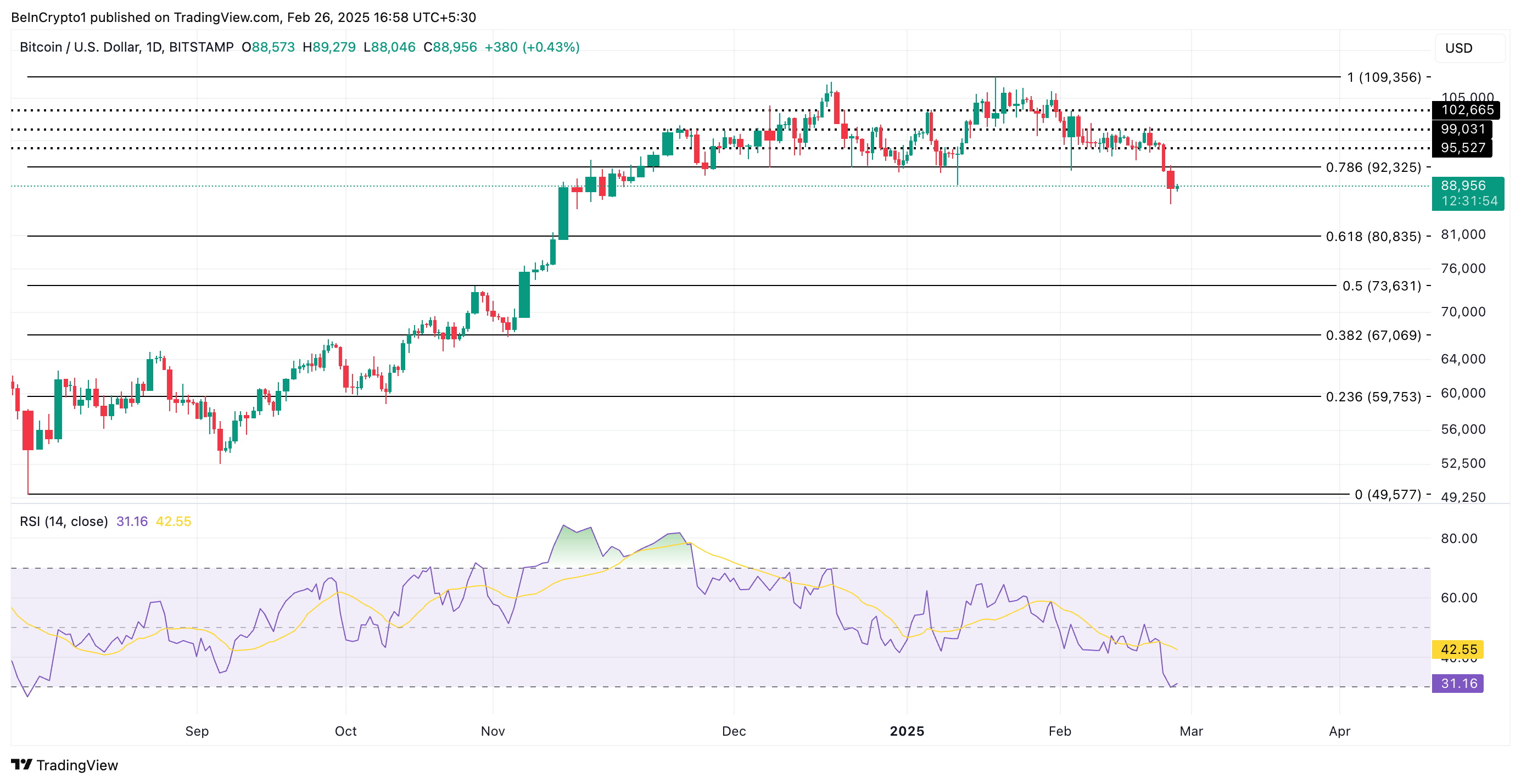Rebound Expected: Recovery Outlook

After a relatively calm February spent trading within a narrow range, Bitcoin (BTC) has experienced a break to the downside, dipping below the $90,000 mark for the first time since November. Currently, the leading cryptocurrency is trading around $88,956.
This recent dip suggests increasing bearish sentiment in the market, sparking concerns that this downward trend could extend further into March.
Range-Bound or Breakout? Experts Weigh In
According to Brian, the lead analyst at Santiment, a key factor contributing to potential further declines is the behavior of Bitcoin whales, who appear to be reducing their trading activity.
“It seems Bitcoin whales are taking a bit of a breather and aren’t accumulating at the moment – they’re mostly holding steady,” Brian shared with BeInCrypto.
Data further supports Brian’s observation. The netflow of Bitcoin’s large holders, tracked by IntoTheBlock, has seen a significant plunge, dropping by over 600% in the last 30 days.
To clarify, “large holders” are defined as whale addresses that possess more than 0.1% of Bitcoin’s circulating supply. Their netflow measures the amount of Bitcoin they are buying versus selling over a given period.
A decrease in netflow signifies that these major investors are reducing their Bitcoin holdings, suggesting an increase in selling activity. This heightened selling pressure could potentially worsen the downward pressure on BTC’s price as market supply increases.
John Glover, Chief Investment Officer (CIO) at Ledn, anticipates that BTC will likely continue to fluctuate within a range of $89,000 to $108,000 throughout March.
“From a technical standpoint, BTC appears to be at a crossroads, potentially taking one of two paths. Firstly, there’s a distinct possibility of a price dip down to $89,000, or even $77,000, before we see the next upward movement. Alternatively, it’s possible that we’ve already reached the bottom, and the next phase will be an ascent, potentially reaching ~$130,000. Predicting the exact path is impossible, and short-term forecasts become less reliable when market movements within weeks or even months are heavily influenced by breaking news and, as we’ve recently seen, the actions of significant players like Strategy. My personal outlook is that we’ll likely remain in a range between $89,000 and $108,000 for most of March,” Glover explained.
Furthermore, the pro-cryptocurrency stance of President Donald Trump leads some investors to consider how his policies might shape Bitcoin’s price trajectory in March. However, Glover suggests that the market has already largely factored in the “Trump effect.”
“In my view, the majority of the ‘Trump effect’ is already priced into the market. We are aware of his strong support for digital assets and his administration’s efforts to streamline cryptocurrency regulations. I don’t anticipate him being a major determinant of price in the immediate future,” Glover concluded.
Bitcoin Nears Oversold Levels – Is a Rebound on the Horizon?
Bitcoin’s current market conditions suggest it may be approaching oversold levels, potentially setting the stage for a price rebound. This is indicated by its Relative Strength Index (RSI) reading, which at the time of this report, is trending downwards at 31.16.
The RSI is a momentum indicator used to identify whether an asset is in overbought or oversold territory. It oscillates between 0 and 100. Typically, an RSI above 70 suggests an asset is overbought and might be due for a price correction downwards, while a reading below 30 often indicates an oversold condition, which could precede a price rebound.
Bitcoin’s current RSI below 30 hints that it’s edging closer to oversold territory. This could signal a potential rebound, possibly pushing the price back towards $92,325 if the current selling pressure diminishes.

Conversely, should the current downward trend persist, Bitcoin’s price might decline further, potentially reaching as low as $80,835.

